If you’re a subscriber to the sara-discuss mailing list, you saw my request today to keep an eye open for a couple of high voltage relays to use as replacements in an antenna loading coil remote switch. This article is some background on what led to that request.
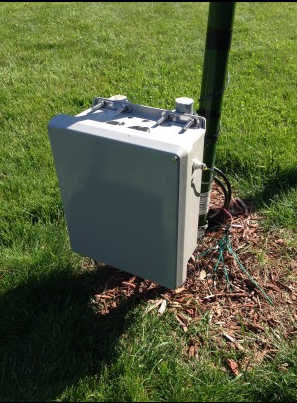
I’ve had a 43′ vertical antenna near the back of my 120’x85′ lot for about 7 years now, and have been very happy with its performance overall. I’ve added radials of various lengths over the years, and have found it’s a good antenna for my needs. A reasonable antenna tuner will load it on 80m-6m, and I always get great reports on it, especially on 40m, 30m, and 20m. Getting it to match on 160m was out of the question, even for my MFJ-998 tuner. I don’t really have trees or a lot big enough for a “real” 160m antenna, so I built a matching network at the base of the antenna using a slightly modified version of AD5X’s excellent plans. This setup allows me to switch a matching circuit in and out of the path to the antenna remotely from the comfort of the hamshack using a couple of remote control wires. I’ve dabbled a little on 160 with the antenna, mostly on SSB, but never really did anything serious, and almost always barefoot at 100w.
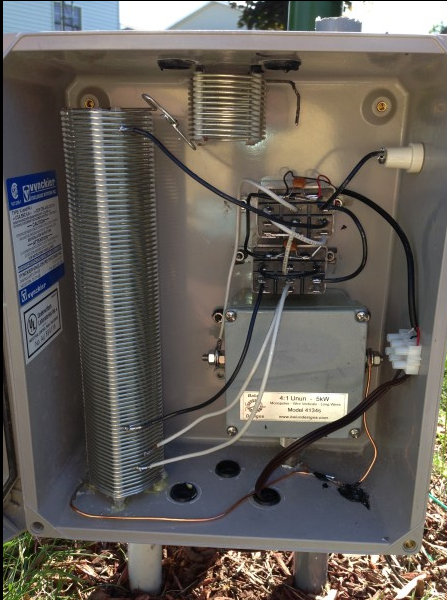
November 30th-December 2nd of 2018 was the annual ARRL 160m CW contest, and I decided this year I’d take a stab at it. I engaged the 160 matching circuit, and tuned up the antenna near the bottom of 160m, fired up my AL-811H amplifier and began to seek out CQ TEST. After a couple of contacts, I noticed the SWR on the antenna was all over the place. Sometimes high, sometimes low.
I went outside and opened up the box and was greeted with the smell of melted plastic and burned wire. I could see one of the switching relays didn’t look good, so to get back on the air for the contest I bypassed the relay and put the 160m coil in-line manually. After the contest, I went back out and removed the relays and did a postmortem.
There’s two relays in this design. This allows switching in different parts of the coil to match the antenna on 80m and 160m. Having two relays also makes it very easy to compare the two and see if one has a failure or not. As you can see from the pictures, clearly one has failed. Obviously I chose the wrong relay for this application. According to the datasheet for this relay, it’s able to handle 2,200 VRMS between contacts in the relay and up to 3,750 VRMS between the contacts and other parts of the relay, but the specification is rated at 60Hz (not RF). These voltage ratings on the relays were able to handle the much lower voltages when the antenna was used on 40 meters and above, but not as the 43′ length became electrically shorter as the frequency dropped.
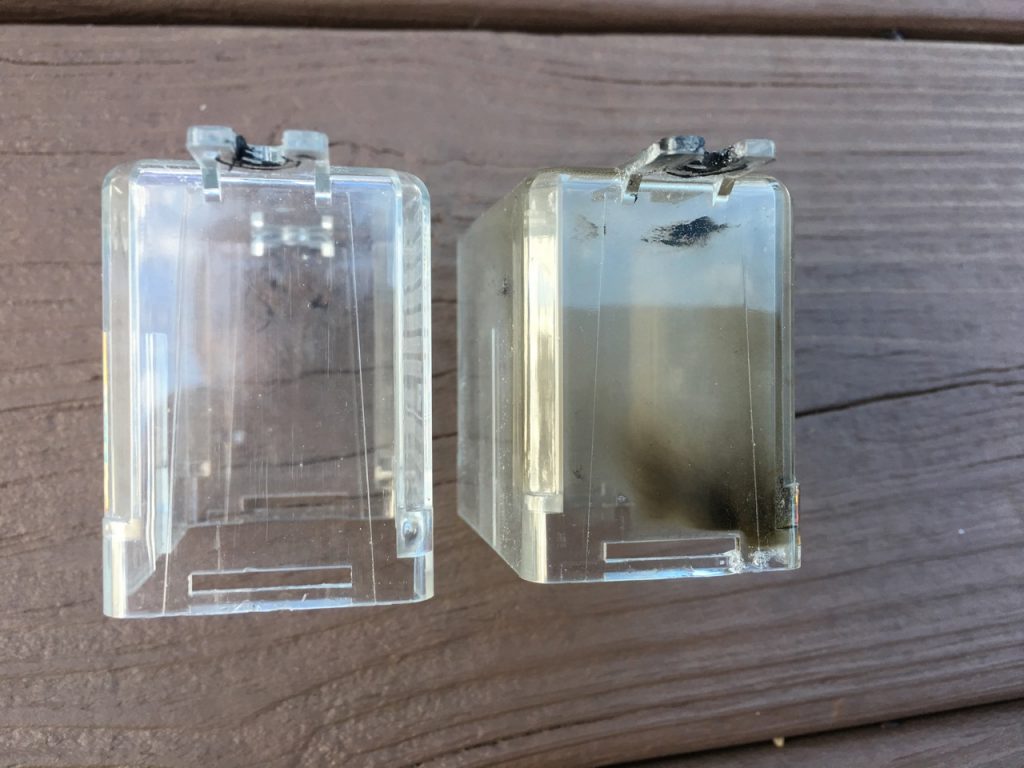
Smoke escaped, but was mostly contained inside the relay cover 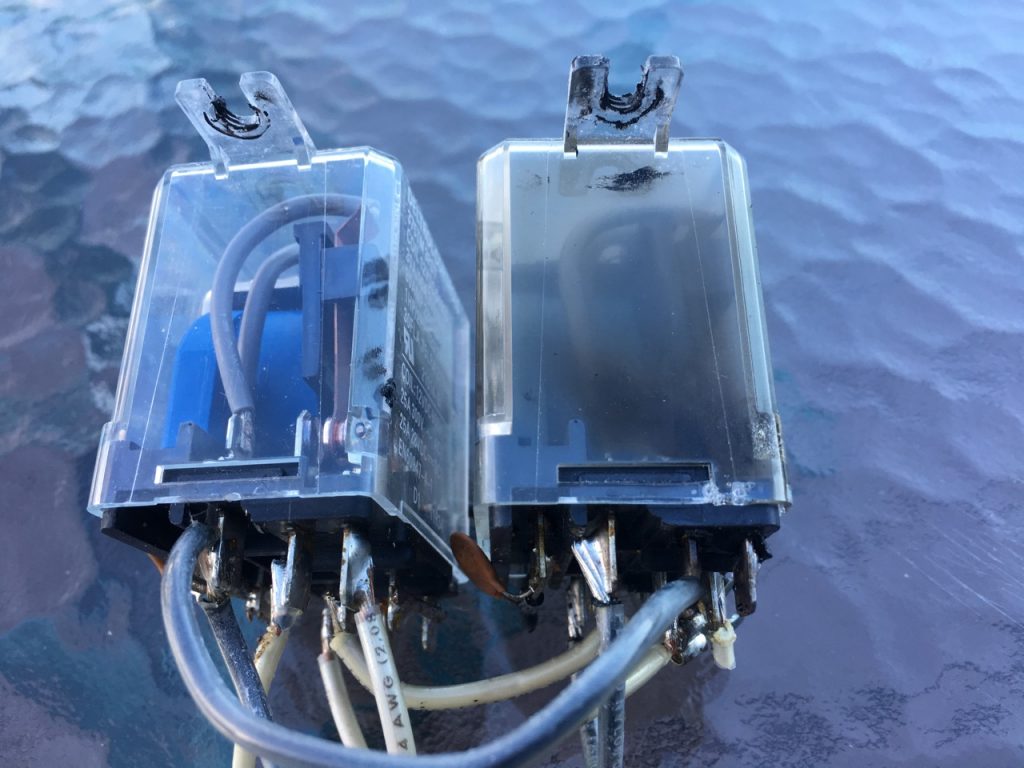

undamaged relay 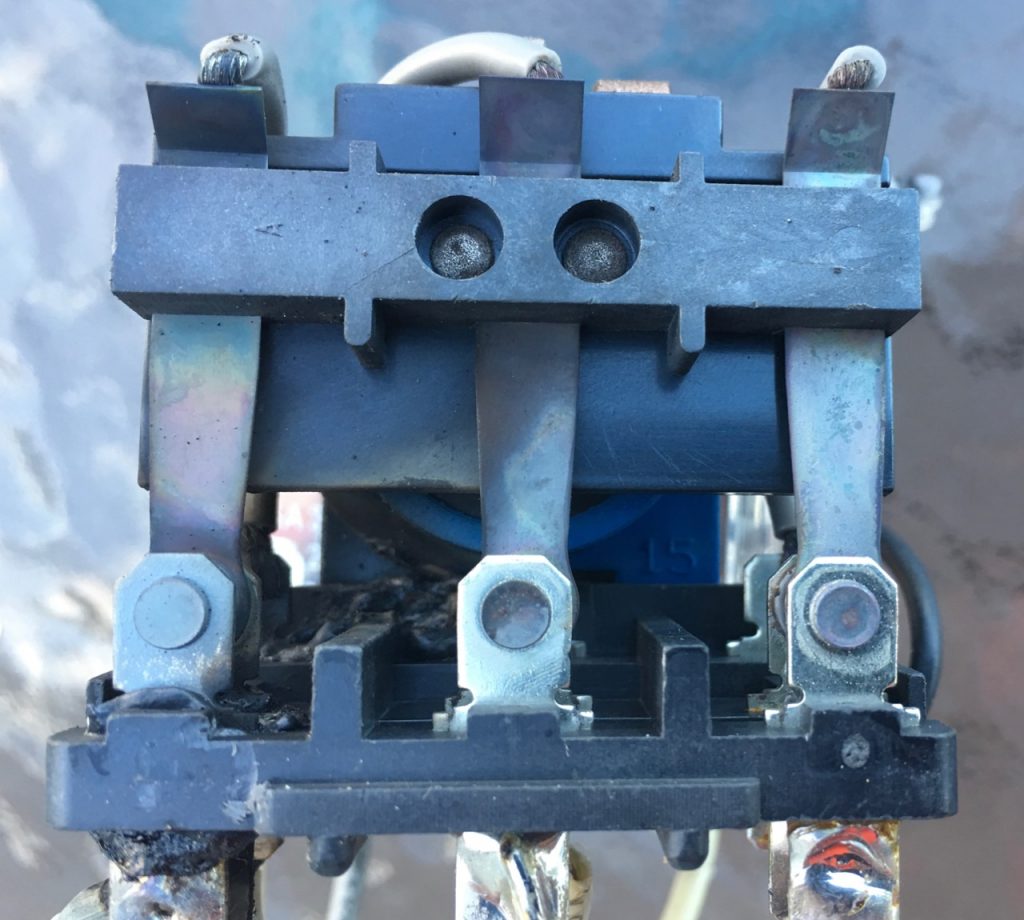
contact on the left experienced flashover 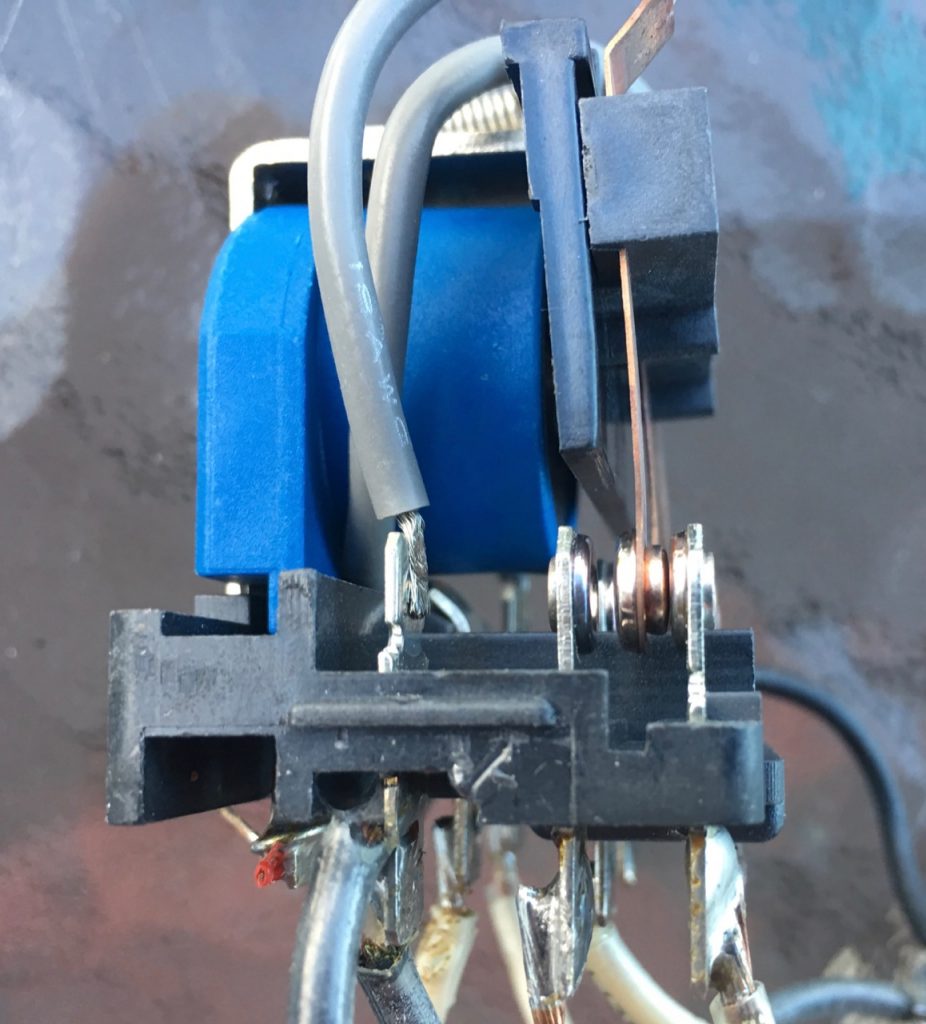
Undamaged relay 
burned contacts 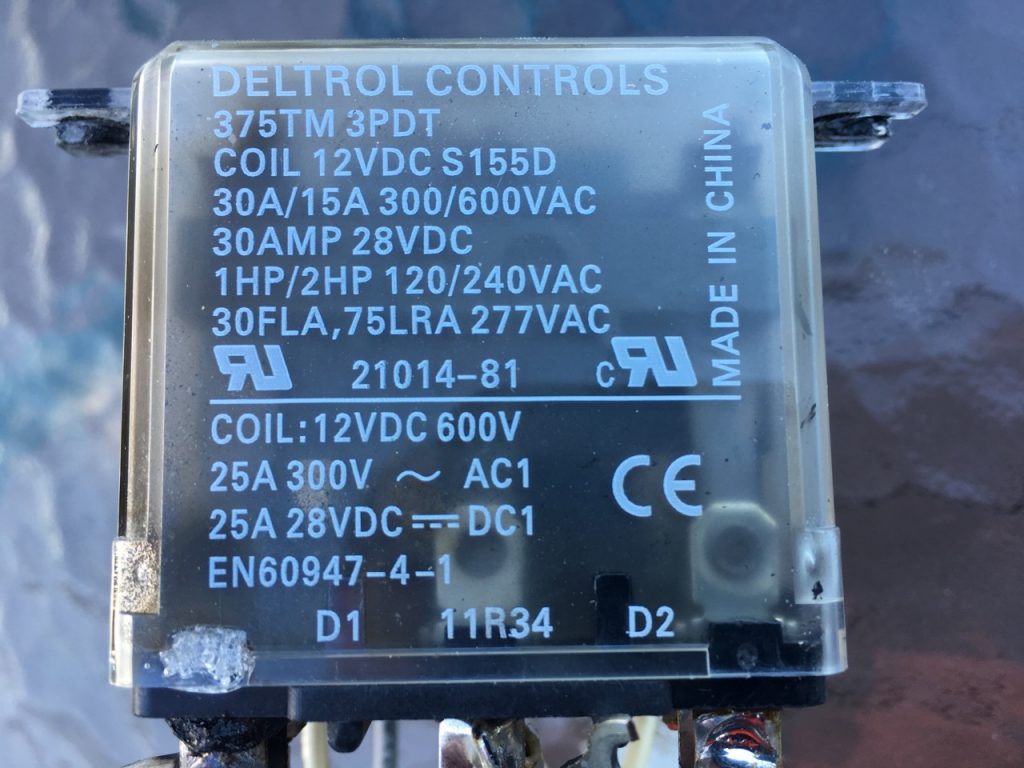
Speaking of voltages, N0CU has a fantastic presentation online that discusses many aspects of the 43′ vertical, including on slide 21 where he discusses voltages one might expect at the base of the antenna. At 1500 watts, you can expect around 19,000 volts peak at the base of this antenna on 160m. Yes, that’s right – 19 kilovolts! I’m running less than 800 watts, but that still comes out to around 14,000 volts at the base of this antenna. At 100 watts, the voltages comes out to about 5,000 volts peak at the base of the antenna. This is a lot – but is more manageable than 19KV.
So what’s the lessons in all this?
- Voltages on antennas, especially electrically short antennas for the frequency of operation can be extremely high. These voltages can be lethal to people, animals, and relays.
- Adding an amplifier to a system increases these voltages significantly. You can get away with some things at 100 watts that will fail in a dramatic way above 500 watts.
- If you’re planning on using an electrically short antenna on any band, do the math and make sure the relays, coils, capacitors, baluns, ununs, insulation on the wire, and all other components can handle the voltages. aka: don’t choose the wrong relay.
- Keep people and animals away from the high voltage area during times you will be transmitting. RF exposure guidelines are another good reason for this, but contact with high voltage RF has a more immediate effect.
